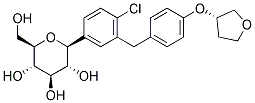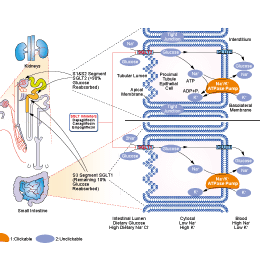
- Bioactive Compounds
- By Signaling Pathways
- PI3K/Akt/mTOR
- Epigenetics
- Methylation
- Immunology & Inflammation
- Protein Tyrosine Kinase
- Angiogenesis
- Apoptosis
- Autophagy
- ER stress & UPR
- JAK/STAT
- MAPK
- Cytoskeletal Signaling
- Cell Cycle
- TGF-beta/Smad
- DNA Damage/DNA Repair
- Compound Libraries
- Popular Compound Libraries
- Customize Library
- Clinical and FDA-approved Related
- Bioactive Compound Libraries
- Inhibitor Related
- Natural Product Related
- Metabolism Related
- Cell Death Related
- By Signaling Pathway
- By Disease
- Anti-infection and Antiviral Related
- Neuronal and Immunology Related
- Fragment and Covalent Related
- FDA-approved Drug Library
- FDA-approved & Passed Phase I Drug Library
- Preclinical/Clinical Compound Library
- Bioactive Compound Library-I
- Bioactive Compound Library-Ⅱ
- Kinase Inhibitor Library
- Express-Pick Library
- Natural Product Library
- Human Endogenous Metabolite Compound Library
- Alkaloid Compound LibraryNew
- Angiogenesis Related compound Library
- Anti-Aging Compound Library
- Anti-alzheimer Disease Compound Library
- Antibiotics compound Library
- Anti-cancer Compound Library
- Anti-cancer Compound Library-Ⅱ
- Anti-cancer Metabolism Compound Library
- Anti-Cardiovascular Disease Compound Library
- Anti-diabetic Compound Library
- Anti-infection Compound Library
- Antioxidant Compound Library
- Anti-parasitic Compound Library
- Antiviral Compound Library
- Apoptosis Compound Library
- Autophagy Compound Library
- Calcium Channel Blocker LibraryNew
- Cambridge Cancer Compound Library
- Carbohydrate Metabolism Compound LibraryNew
- Cell Cycle compound library
- CNS-Penetrant Compound Library
- Covalent Inhibitor Library
- Cytokine Inhibitor LibraryNew
- Cytoskeletal Signaling Pathway Compound Library
- DNA Damage/DNA Repair compound Library
- Drug-like Compound Library
- Endoplasmic Reticulum Stress Compound Library
- Epigenetics Compound Library
- Exosome Secretion Related Compound LibraryNew
- FDA-approved Anticancer Drug LibraryNew
- Ferroptosis Compound Library
- Flavonoid Compound Library
- Fragment Library
- Glutamine Metabolism Compound Library
- Glycolysis Compound Library
- GPCR Compound Library
- Gut Microbial Metabolite Library
- HIF-1 Signaling Pathway Compound Library
- Highly Selective Inhibitor Library
- Histone modification compound library
- HTS Library for Drug Discovery
- Human Hormone Related Compound LibraryNew
- Human Transcription Factor Compound LibraryNew
- Immunology/Inflammation Compound Library
- Inhibitor Library
- Ion Channel Ligand Library
- JAK/STAT compound library
- Lipid Metabolism Compound LibraryNew
- Macrocyclic Compound Library
- MAPK Inhibitor Library
- Medicine Food Homology Compound Library
- Metabolism Compound Library
- Methylation Compound Library
- Mouse Metabolite Compound LibraryNew
- Natural Organic Compound Library
- Neuronal Signaling Compound Library
- NF-κB Signaling Compound Library
- Nucleoside Analogue Library
- Obesity Compound Library
- Oxidative Stress Compound LibraryNew
- Plant Extract Library
- Phenotypic Screening Library
- PI3K/Akt Inhibitor Library
- Protease Inhibitor Library
- Protein-protein Interaction Inhibitor Library
- Pyroptosis Compound Library
- Small Molecule Immuno-Oncology Compound Library
- Mitochondria-Targeted Compound LibraryNew
- Stem Cell Differentiation Compound LibraryNew
- Stem Cell Signaling Compound Library
- Natural Phenol Compound LibraryNew
- Natural Terpenoid Compound LibraryNew
- TGF-beta/Smad compound library
- Traditional Chinese Medicine Library
- Tyrosine Kinase Inhibitor Library
- Ubiquitination Compound Library
-
Cherry Picking
You can personalize your library with chemicals from within Selleck's inventory. Build the right library for your research endeavors by choosing from compounds in all of our available libraries.
Please contact us at [email protected] to customize your library.
You could select:
- Antibodies
- Bioreagents
- qPCR
- 2x SYBR Green qPCR Master Mix
- 2x SYBR Green qPCR Master Mix(Low ROX)
- 2x SYBR Green qPCR Master Mix(High ROX)
- Protein Assay
- Protein A/G Magnetic Beads for IP
- Anti-Flag magnetic beads
- Anti-Flag Affinity Gel
- Anti-Myc magnetic beads
- Anti-HA magnetic beads
- Magnetic Separator
- Poly DYKDDDDK Tag Peptide lyophilized powder
- Protease Inhibitor Cocktail
- Protease Inhibitor Cocktail (EDTA-Free, 100X in DMSO)
- Phosphatase Inhibitor Cocktail (2 Tubes, 100X)
- Cell Biology
- Cell Counting Kit-8 (CCK-8)
- Animal Experiment
- Mouse Direct PCR Kit (For Genotyping)
- New Products
- Contact Us
Empagliflozin
Synonyms: BI 10773
Empagliflozin is a potent and selective SGLT-2 inhibitor with IC50 of 3.1 nM, exhibits >300-fold selectivity over SGLT-1, 4, 5 and 6. Phase 3.

Empagliflozin Chemical Structure
CAS No. 864070-44-0
Purity & Quality Control
Batch:
Purity:
99.97%
99.97
Empagliflozin Related Products
| Related Targets | SGLT1 SGLT2 | Click to Expand |
|---|---|---|
| Related Products | Sotagliflozin Phlorizin Phloretin (RJC 02792) | Click to Expand |
| Related Compound Libraries | FDA-approved Drug Library Natural Product Library Bioactive Compound Library-I GPCR Compound Library | Click to Expand |
Signaling Pathway
Cell Data
| Cell Lines | Assay Type | Concentration | Incubation Time | Formulation | Activity Description | PMID |
|---|---|---|---|---|---|---|
| HEK293 | Function assay | 15 mins | Inhibition of recombinant human SGLT2 expressed in HEK293 cells assessed as decrease in [14C]-AMG uptake preincubated for 15 mins followed by [14C]-AMG addition and measured after 4 hrs by Topcount method, IC50 = 0.0031 μM. | ChEMBL | ||
| Click to View More Cell Line Experimental Data | ||||||
Biological Activity
| Description | Empagliflozin is a potent and selective SGLT-2 inhibitor with IC50 of 3.1 nM, exhibits >300-fold selectivity over SGLT-1, 4, 5 and 6. Phase 3. | ||
|---|---|---|---|
| Targets |
|
| In vitro | ||||
| In vitro | Empagliflozin shows >2500-fold selectivity for hSGLT-2 over hSGLT-1 (IC50 8300 nM) and >3500-fold selectivity over hSGLT-4, it exhibits >350-fold selectivity over hSGLT-5 (IC50=1100 nM) and >600-fold selectivity over hSGLT-6. No relevant inhibition of GLUT1 is observed up to 10 μM Empagliflozin. In a kinetic binding experiments, [3H]-empagliflozin displays a high affinity for SGLT-2 with a mean Kd of 57 nM in the absence of glucose, and shows a half-life of [3H]-empagliflozin-binding to SGLT-2 of 59 min in the absence of glucose.Its binding to SGLT-2 is competitive with glucose. [1] | |||
|---|---|---|---|---|
| Kinase Assay | [14C]-monosaccharide uptake inhibition experiments | |||
| Stable cell lines over-expressing hSGLT-1, -2, -4, -5 or -6 or rSGLT-1 or -2 are used for the sodium-dependent monosaccharide transport inhibition assay. Cells are pre-incubated in 200 μL uptake buffer (10 mM HEPES, 137 mM NaCl, 5.4 mM KCl, 2.8 mM CaCl2, 1.2 mM MgCl2, 50 μg/ml Gentamycin, 0.1% BSA) for 25 minutes at 37°C. 10 μM Cytochalasin B and test compound is added at different concentrations 15 minutes before the initiation of the uptake experiment. The uptake reaction is started by the addition of 0.6 μCi [14C]-labelled monosaccharide i.e. [14C]-labelled AMG, glucose, fructose, mannose or myo-inositol, in 0.1 mM AMG (or the respective non-radioactive monosaccharide). After incubation for 60 minutes (hSGLT-5), 90 minutes (hSGLT-4) or 4 hours (hSGLT-2) at 37°C, the cells are washed three times with 300 μL PBS and then lysed in 0.1 N NaOH with intermittent shaking for 5 minutes. The lysate is mixed with 200 μL MicroScint 40 and shaken for 15 minutes and counted for radioactivity in the TopCount NXT. For SGLT-4 and SGLT-5 assays cells are pre-incubated in pre-treatment buffer (uptake buffer containing choline chloride instead of NaCl) for 25 minutes prior to addition of uptake buffer. | ||||
| Cell Research | Cell lines | HK2 cells (human kidney PTC line) | ||
| Concentrations | ~ 500 nM | |||
| Incubation Time | 72 h | |||
| Method | MTS assay | |||
| In Vivo | ||
| In vivo | High exposure of empagliflozin is achieved in dogs, with plasma concentrations >100-fold above IC50 measured 24 h after administration of 5 mg/kg empagliflozin. The total plasma clearance of empagliflozin in ZDF rat is 43 mL/min/kg, while in dogs is lower at 1.8 mL/min/kg. Cmax of empagliflozin in ZDF rat and dogs is 167 nM and 17254 nM, respectively. [1] Terminal elimination half-life in ZDF rat and dogs is 1.5 h and 6.3 h, respectively. Bioavailability of empagliflozin in ZDF rat is 33.2%, while in dogs is higher at 89.0%. Long-term treatment with empagliflozin, improves glycaemic control and features of metabolic syndrome in diabetic rats. [2] | |
|---|---|---|
| Animal Research | Animal Models | ZDF rats and beagle dogs |
| Dosages | ~2 mL/kg | |
| Administration | Intravenously or orally | |
| NCT Number | Recruitment | Conditions | Sponsor/Collaborators | Start Date | Phases |
|---|---|---|---|---|---|
| NCT06012266 | Not yet recruiting | Heart Failure |
Centre Hospitalier Universitaire Vaudois|Great Ormond Street Hospital for Children NHS Foundation Trust|University College London |
August 2024 | Phase 2 |
| NCT06308679 | Not yet recruiting | Healthy Vollunteer |
Pharma Nueva |
May 28 2024 | Phase 1 |
| NCT06339788 | Not yet recruiting | Healthy Volunteers |
Handok Inc. |
April 2024 | Phase 1 |
| NCT06013865 | Recruiting | Kidney Transplant|Type 2 Diabetes |
VA Office of Research and Development|Iowa City VA Health Care System|VA Pittsburgh Healthcare System|Nashville VA Medical Center |
April 5 2024 | Phase 4 |
| NCT06021145 | Recruiting | Type 1 Diabetes |
McGill University Health Centre/Research Institute of the McGill University Health Centre|Diabetes Canada |
March 2024 | Phase 4 |
Chemical Information & Solubility
| Molecular Weight | 450.91 | Formula | C23H27ClO7 |
| CAS No. | 864070-44-0 | SDF | -- |
| Smiles | C1COCC1OC2=CC=C(C=C2)CC3=C(C=CC(=C3)C4C(C(C(C(O4)CO)O)O)O)Cl | ||
| Storage (From the date of receipt) | |||
|
In vitro |
DMSO : 90 mg/mL ( (199.59 mM) Moisture-absorbing DMSO reduces solubility. Please use fresh DMSO.) Water : Insoluble Ethanol : Insoluble |
Molecular Weight Calculator |
|
In vivo Add solvents to the product individually and in order. |
In vivo Formulation Calculator |
||||
Preparing Stock Solutions
Molarity Calculator
In vivo Formulation Calculator (Clear solution)
Step 1: Enter information below (Recommended: An additional animal making an allowance for loss during the experiment)
mg/kg
g
μL
Step 2: Enter the in vivo formulation (This is only the calculator, not formulation. Please contact us first if there is no in vivo formulation at the solubility Section.)
% DMSO
%
% Tween 80
% ddH2O
%DMSO
%
Calculation results:
Working concentration: mg/ml;
Method for preparing DMSO master liquid: mg drug pre-dissolved in μL DMSO ( Master liquid concentration mg/mL, Please contact us first if the concentration exceeds the DMSO solubility of the batch of drug. )
Method for preparing in vivo formulation: Take μL DMSO master liquid, next addμL PEG300, mix and clarify, next addμL Tween 80, mix and clarify, next add μL ddH2O, mix and clarify.
Method for preparing in vivo formulation: Take μL DMSO master liquid, next add μL Corn oil, mix and clarify.
Note: 1. Please make sure the liquid is clear before adding the next solvent.
2. Be sure to add the solvent(s) in order. You must ensure that the solution obtained, in the previous addition, is a clear solution before proceeding to add the next solvent. Physical methods such
as vortex, ultrasound or hot water bath can be used to aid dissolving.
Tech Support
Answers to questions you may have can be found in the inhibitor handling instructions. Topics include how to prepare stock solutions, how to store inhibitors, and issues that need special attention for cell-based assays and animal experiments.
Tel: +1-832-582-8158 Ext:3
If you have any other enquiries, please leave a message.
* Indicates a Required Field
Tags: buy Empagliflozin | Empagliflozin supplier | purchase Empagliflozin | Empagliflozin cost | Empagliflozin manufacturer | order Empagliflozin | Empagliflozin distributor







































